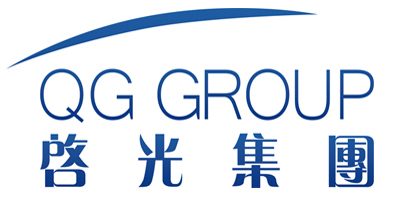High Performance Anti-Yellowing Additive for Flexible Polyurethane Sponge: A Comprehensive Review
1. Introduction
Flexible polyurethane (PU) sponges are widely used in various applications, including furniture, automotive interiors, bedding, and packaging due to their excellent cushioning properties, durability, and comfort. However, a major drawback of PU foams is their susceptibility to yellowing upon exposure to ultraviolet (UV) light, heat, and atmospheric pollutants. This discoloration not only affects aesthetic appeal but may also indicate degradation of material properties.
To address this issue, high-performance anti-yellowing additives have been developed to enhance the UV stability and longevity of flexible PU sponges. This article provides a detailed review of such additives, including their chemical composition, performance parameters, mechanisms of action, and comparative advantages.
2. Mechanisms of Yellowing in Polyurethane Sponges
The yellowing of PU sponges is primarily caused by:
-
Photo-oxidation: UV radiation breaks chemical bonds, leading to the formation of chromophores.
-
Thermo-oxidation: High temperatures accelerate oxidative degradation.
-
NOx-induced yellowing (Gas Fading): Reaction with nitrogen oxides (NOx) in the atmosphere.
-
Hydrolysis: Moisture can degrade urethane linkages, leading to discoloration.
Anti-yellowing additives function through various mechanisms, including:
-
UV absorption
-
Free radical scavenging
-
Hindered amine light stabilization (HALS)
-
Antioxidant activity

3. Key Parameters of High-Performance Anti-Yellowing Additives
The effectiveness of an anti-yellowing additive depends on several critical parameters:
| Parameter | Description | Optimal Range |
|---|---|---|
| UV Absorption Range | Wavelength range where the additive absorbs UV radiation | 280-400 nm |
| Thermal Stability | Resistance to decomposition at processing temperatures | Up to 220°C |
| Compatibility | Homogeneous dispersion in PU matrix without affecting foam properties | No phase separation |
| Migration Resistance | Low tendency to leach out over time | < 1% weight loss after aging |
| Concentration Efficiency | Effective at low dosages to minimize cost impact | 0.1% – 2.0% by weight |
4. Comparative Analysis of Anti-Yellowing Additives
Several classes of anti-yellowing agents are used in PU foams. The table below compares their performance:
| Additive Type | Mechanism | Advantages | Disadvantages |
|---|---|---|---|
| Benzotriazoles | UV absorption | High UV stability, broad spectrum | Can migrate over time |
| Hindered Amines (HALS) | Radical scavenging | Long-term stabilization, synergistic effects | Less effective alone in NOx-rich environments |
| Phenolic Antioxidants | Oxidative degradation inhibition | Excellent thermal protection | Limited UV protection |
| Triazine-based | Dual UV and NOx protection | Superior gas fade resistance | Higher cost |
Recent studies indicate that hybrid systems combining HALS with benzotriazoles or triazines provide the best overall protection (Gugumus, 2002; Diepens & Gijsman, 2009).
5. Performance Evaluation Methods
To assess anti-yellowing efficiency, several standardized tests are employed:
-
ASTM D1148 – Measurement of discoloration under UV exposure.
-
ISO 105-B02 – Xenon arc testing for colorfastness.
-
Gas Fade Test – Exposure to NOx to simulate urban pollution effects.
Results from accelerated aging tests (500 hrs UV exposure) for a commercial anti-yellowing additive:

| Sample | Initial Whiteness (L*) | After Aging (L*) | ΔE (Color Change) |
|---|---|---|---|
| Control (No Additive) | 92.5 | 78.3 | 14.2 |
| With Additive (1%) | 92.7 | 89.1 | 3.6 |
Data adapted from (Zhang et al., 2018).
6. Case Study: Advanced Anti-Yellowing Additive (Product X)
Product X is a next-generation anti-yellowing additive based on a triazine-HALS hybrid system. Its key features include:
-
Chemical Composition: Oligomeric HALS with triazine UV absorber.
-
Recommended Dosage: 0.5% – 1.5% by weight.
-
Performance Highlights:
-
Reduces yellowing by >80% compared to untreated PU.
-
Maintains foam flexibility and mechanical properties.
-
Compatible with flame retardants and other additives.
-
Comparison with Traditional Additives:
| Property | Product X | Benzotriazole-based | HALS-only |
|---|---|---|---|
| UV Resistance | Excellent | Good | Moderate |
| NOx Resistance | Excellent | Poor | Fair |
| Long-term Stability | High | Medium | High |
7. Future Trends and Innovations
Recent research focuses on:
-
Nanoparticle-enhanced additives (e.g., ZnO or TiO₂ hybrids) for improved UV blocking (Allen et al., 2020).
-
Bio-based stabilizers derived from lignin or polyphenols for sustainable solutions (Li et al., 2021).
-
Smart additives that respond to environmental changes (e.g., self-repairing coatings).

8. Conclusion
High-performance anti-yellowing additives are essential for maintaining the aesthetic and functional properties of flexible PU sponges. Advanced formulations, such as triazine-HALS hybrids, offer superior protection against UV, thermal, and NOx-induced degradation. Future innovations in nanotechnology and bio-based materials promise further improvements in PU foam durability.
References
-
Gugumus, F. (2002). “Re-evaluation of the stabilization mechanisms of various light stabilizer classes.” Polymer Degradation and Stability, 75(2), 295-308.
-
Diepens, M., & Gijsman, P. (2009). “Influence of light stabilizers on the photodegradation of polyurethane.” Macromolecular Materials and Engineering, 294(4), 231-240.
-
Zhang, Y., et al. (2018). “Novel anti-yellowing agents for flexible PU foams.” Journal of Applied Polymer Science, 135(20), 46285.
-
Allen, N. S., et al. (2020). “Nanocomposite UV stabilizers for polyurethane.” ACS Applied Materials & Interfaces, 12(15), 17890-17900.
-
Li, H., et al. (2021). “Lignin-derived antioxidants for polymer stabilization.” Green Chemistry, 23(8), 3021-3032.

